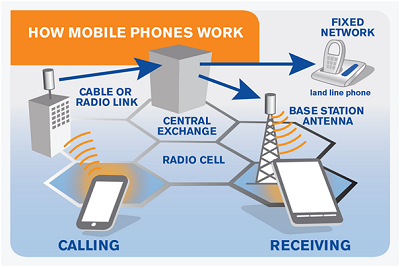
Mobile Phone Technology Basics
 image ©elipt.com
image ©elipt.com
- When purchased, the SIM is registered by a network, the details are stored in the home network (HLR or HSS) with other details that allow the SIM to run on the network.
- The SIM is inserted in the mobile station (MS) and powered up.
- The MS connects to the local network and is now available to be used subject to the constraints of the SIM, largely financial constraints.
- The wireless element is the connection between the mobile phone and the mast. The communications within the rest of the network, the backhaul, is most likely fibre optic cable.
- Whilst switched on and a network is available, the mobile is tracked and if necessary the control passed from one base station element to another through a process called handover
- Mobile phones are often called cell phones. A cell is the area which is controlled by a single mast often represented by a hexhagonal cell
- A MS will be able to make or receive a call, send or receive a text, send or receive data.
- The trunk or backhaul network must have the capacity to deal with all the connections made to the mast or core network within a time with acceptable lag.
© mobilephonetechnology.co.uk all rights reserved 2017-2025
